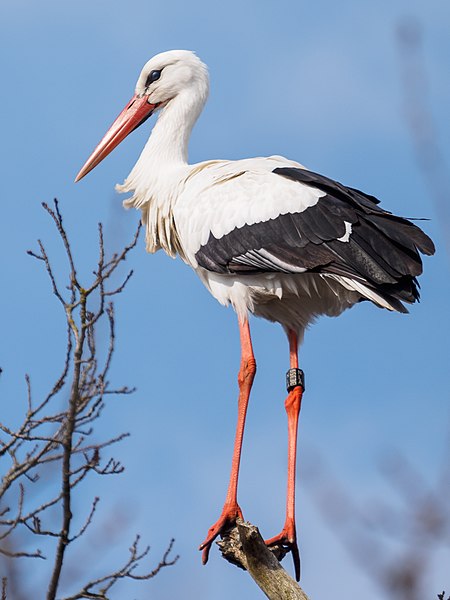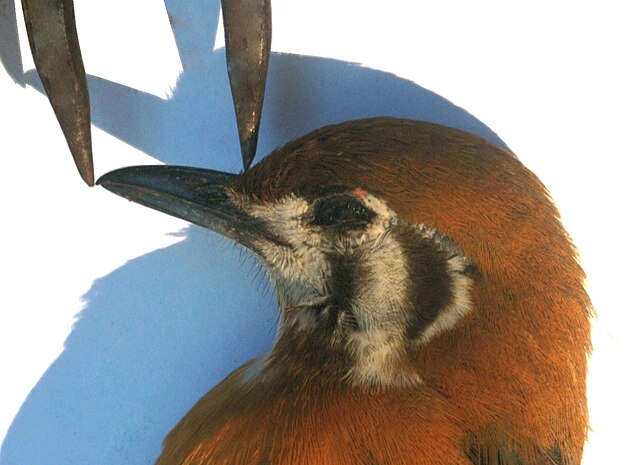Storks are large, long-legged, long-necked wading birds with long, stout bills. They belong to the family called Ciconiidae, and make up the order Ciconiiformes. Ciconiiformes previously included a number of other families, such as herons and ibises, but those families have been moved to other orders.
Stork
European white stork in a nest in Bisag, Croatia
Mycteria storks, like this yellow-billed stork, have sensitive bills that allow them to hunt by touch
Lesser adjutants will forage in marine habitats, unlike most storks
The beak, bill, or rostrum is an external anatomical structure found mostly in birds, but also in turtles, non-avian dinosaurs and a few mammals. A beak is used for pecking, grasping, and holding, preening, courtship, and feeding young. The terms beak and rostrum are also used to refer to a similar mouth part in some ornithischians, pterosaurs, cetaceans, dicynodonts, anuran tadpoles, monotremes, sirens, pufferfish, billfishes and cephalopods.
The bony core of the beak is a lightweight framework, like that seen on this barn owl's skull.
A gull's upper mandible can flex upwards because it is supported by small bones which can move slightly backwards and forwards.
The sawtooth serrations on a common merganser's bill help it to hold tight to its fish prey.
A bird's culmen is measured in a straight line from the tip of the beak to a set point — here, where the feathering starts on the bird's forehead.








